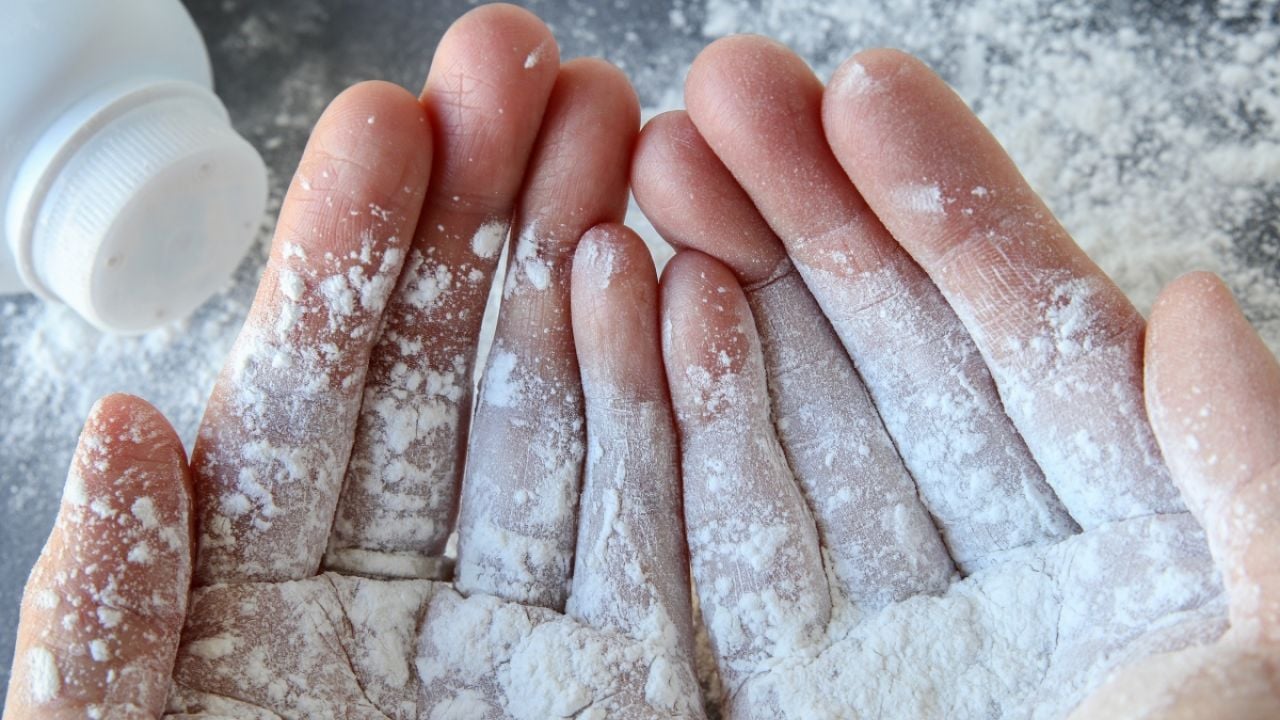
Johnson & Johnson recently agreed to a $8.9 billion settlement of more than 60,000 lawsuits alleging that its baby powder and other talc-based personal care products caused cancer.
The proposed settlement, announced April 4, marks the end of a long-running legal battle by victims who claimed the talc in the products caused them to develop ovarian cancer or talc contaminated with asbestos resulted in mesothelioma. Talc is a possible perineal carcinogen and asbestos is a known carcinogen.
Talc-based products are not just a problem for Johnson & Johnson – products from other companies may be a concern, too.
Talc is widely used in cosmetics and personal care products. The most prominent safety risk is associated with the inhalation of asbestos contamination, known to occur during the talc mining process. Geologically, talc and asbestos can be formed from the same parent rock. In many regions, talc deposits are contaminated with asbestos fibers.
Inhalation of even the smallest amount of asbestos in talc can cause mesothelioma and other diseases many years after exposure. Studies have found that over 60 percent of mesothelioma cases in women were likely due to non-occupational exposure to asbestos.
An ongoing problem
Cosmetics companies have known since the 1950s that talc could be contaminated with asbestos. The public was alerted in the early 1970s. But the industry persuaded the Food and Drug Administration it could be trusted to regulate its own products. It also convinced the FDA to let companies rely on an asbestos detection method that could see some but not all asbestos fibers.
In March 2019, Scott Faber, EWG’s senior vice president for government affairs, testified before the House Committee on Oversight and Government Reform on the public health risks of carcinogens such as asbestos in personal care products.
Before that hearing, the FDA issued a rare alert after finding asbestos in at least three different talc-based products. The agency urged consumers to stop using certain cosmetics products marketed to tweens and teens that are sold at the national retailer Claire’s.
Many other cosmetics continue to be made with talc.
In 2020, EWG commissioned laboratory tests of 21 talc-based cosmetics products, including two eye shadow palettes and one toy makeup kit marketed to children. The tests found nearly 15 percent of samples contained asbestos. Our peer-reviewed paper analyzing the test results highlighted the outdated and inadequate methods used by the cosmetics industry to screen for asbestos in talc-based cosmetics.
Cosmetics law update
Until recently, no federal law required tests for asbestos in cosmetics, so consumers were vulnerable to talc-containing products. But last December, Congress passed the Modernization of Cosmetics Regulation Act of 2022, the first update to federal cosmetics law since 1938.
As a result of the new law, companies must now use state-of-the-art test methods to look for the presence of asbestos in talc-based products. But the $86 billion personal care products industry remains largely self-regulated. To ensure the safety and labeling of these products, the FDA relies mostly on companies and the individuals who market them.
Consumers use a wide variety of personal care products – every day, American women use an average of 12 products containing 168 different chemicals. Men use an average of six products containing 85 different chemicals every day. Most consumers believe these chemicals have been reviewed by the FDA, and three-fourths of consumers support strict regulation.
But the FDA has regulated only nine ingredients for safety reasons, leaving consumers vulnerable to exposure to potentially harmful substances. And the new law does not require the FDA to review chemicals of concern.
Instead, states like California, Maryland and New York are leading the way by banning harmful chemicals from personal care products such as cosmetics.
Thanks to the new federal law, companies must test their products for asbestos with the latest technology. But EWG recommends avoiding products that contain talc, particularly powders, especially for children. Makeup in powder form can be easily inhaled into little lungs.
EWG also advises being wary of “toy” makeup kits, which are often made with cheap and potentially hazardous ingredients, like asbestos-contaminated talc, lead and other substances linked to serious health hazards.
EWG’s Skin Deep® is a searchable online resource rating more than 90,000 personal care products based on hazards associated with their ingredients. A survey of Skin Deep found more than 3,000 products containing talc, almost 60 percent of which are powders. To reduce the risk of asbestos contamination, consumers should look for cream-based blush and eye shadows instead.
Shoppers on the go can also use the Healthy Living app to scan the barcodes of personal care products to see whether they contain talc and how they rate.



